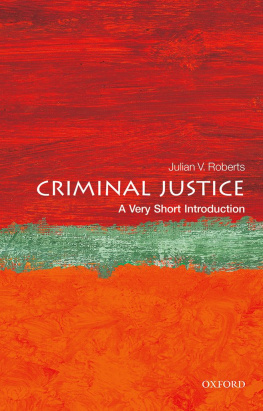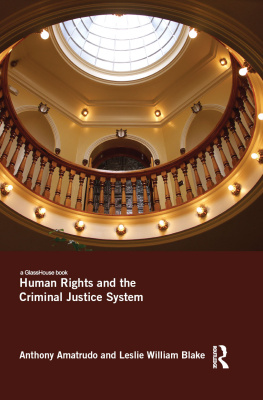First published in 2010 by Learning Matters Ltd
All rights reserved. No part of this publication may be reproduced, stored in a retrieval system or transmitted in any form by any means, electronic, mechanical, photocopying, recording, or otherwise, without prior permission in writing from Learning Matters Ltd.
Copyright 2010 Christopher Blake, Barrie Sheldon and Peter Williams.
British Library Cataloguing in Publication Data
A CIP record for this book is available from the British Library.
ISBN: 978 1 84445 345 0
The rights of Christopher Blake, Barrie Sheldon and Peter Williams to be identified as the authors of this Work have been asserted by them in accordance with the Copyright, Design and Patents Act 1988.
Cover and text design by Toucan Graphic Design Ltd.
Project Management by Diana Chambers
Typeset by Kelly Winter
Printed and bound in Great Britain by TJ International, Padstow, Cornwall
Learning Matters Ltd
33 Southernhay East
Exeter EX1 1NX
Tel: 01392 215560
info@learningmatters.co.uk
www.learningmatters.co.uk
All weblinks and web addresses in the book have been carefully checked prior to publication, but for up-to-date information please visit the Learning Matters website, www.learningmatters.co.uk.
Criminal justice
CHAPTER OBJECTIVES
By the end of this chapter you should be able to:
- understand some of the models and theories related to criminal justice;
- understand how the Criminal Justice System (CJS) is managed and the role of government;
- describe the key players and their role within the CJS;
- consider and analyse a number of key issues related to the CJS.
LINKS TO STANDARDS
This chapter provides opportunities for links with the following Skills for Justice, National Occupational Standards (NOS) for Policing and Law Enforcement 2008.
AE1.1 | Maintain and develop your own knowledge, skills and competence. |
HA1 | Manage your own resources. |
HA2 | Manage your own resources and professional development. |
With the introduction of the Qualification and Credit Framework (QCF) it is likely that the term National Occupational Standards will change. At the time of writing it is not clear what the new title will be, although it is known that some police organisations will use the term QCF assessment units.
Links to current NOS are provided at the start of each chapter; however it should be noted that these are currently subject to review and it is recommended that you visit the Skills for Justice website to check the currency of all the NOS provided: www.skillsforjustice-nosfinder.com.
Introduction
Criminal Justice is a particularly complex process through which the state decides what particular forms of behaviour are to be considered unacceptable and then proceeds through a series of stages arrest, charge, prosecution, trial sentence, appeal, punishment in order to bring the guilty to justice.
(Muncie and Wilson, 2006, p ix)
Criminal justice is an issue for us all and, with the growth of crime during the latter stages of the twentieth century, it became a key issue for all political parties, who were faced with the challenge of effectively tackling the problems of crime and disorder responsible for public disquiet. Crime figures have risen dramatically since the end of the Second World War and a peak of nearly 20 million crimes per year within England and Wales was reported by the British Crime Survey in 1995.
Let us consider the concept of criminal justice in simple terms. When a person commits a crime society will expect the state to do something about it and bring the offender to account so that justice can be seen to be done. Those convicted of crime should be suitably punished and steps taken to prevent further offending. The state also has a duty to protect innocent and vulnerable persons and to help victims of crime.
As you proceed through the book we will explore some of these issues in greater detail.
Overview
outlines the structure and role of the courts and the part they play within the CJS. The courts are responsible for sentencing decisions and society has an expectation that justice is seen to be done within the courtroom.
examines issues surrounding the arrest and detention of an individual and the safeguards that are currently in place to ensure that individual human rights are protected and that the processes used by agencies of the state are ethical and transparent.
explores the prosecution process and the role of the Crown Prosecution Service (CPS), including the controversy of recent criminal justice innovations, such as Simple, Speedy, Summary Justice (SSSJ).
explores the wide range of sentencing options that are now available to the courts and considers some of the challenges currently facing the CJS, such as overcrowded prisons and implementing effective community sentences.
deals with the plight of victims within the CJS and more particularly the impact of legislation since 1997, which was intended to place victims at the heart of the CJS. We will briefly discuss the emergence of victimology as a science that examines the harm that victims suffer through illegal activities. We will also consider some models within victimology and criminal justice theory, and conclude by asking whether the notion of restorative justice and reparation have a place in the CJS.
criminal justice strategy.
outlines the implications of the Crime and Disorder Act 1998, which provided a statutory requirement for local councils and the police to jointly carry out crime audits and prepare community safety strategies in conjunction with the Probation Service and Health Authorities. This has had a profound effect on the CJS and has moved the focus away from perceptions that the police alone are responsible for crime and disorder problems.
explains some criminological theories with explanations that have shaped both local and international contemporary criminal justice policies.
provides a summary of the book content and also considers some future directions within the CJS. The growth of terrorism, the worldwide recession, miscarriages of justice and changes of government are just some examples of events that could have an impact on criminal justice and those agencies, such as the police, who have a key role to play within the CJS.
Within this chapter we shall provide a brief historical perspective of criminal justice and consider a number of paradigms (models) together with associated theories. Further, we shall explore recent government criminal justice interventions and discover how the Labour Party has transformed the CJS following their election in 1997.






